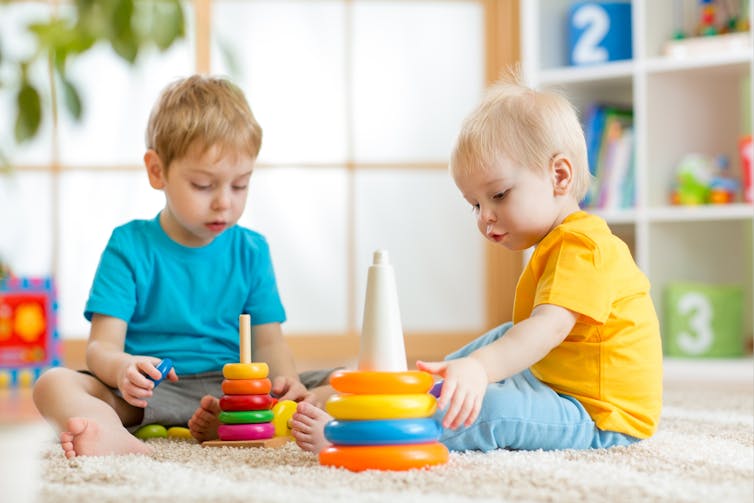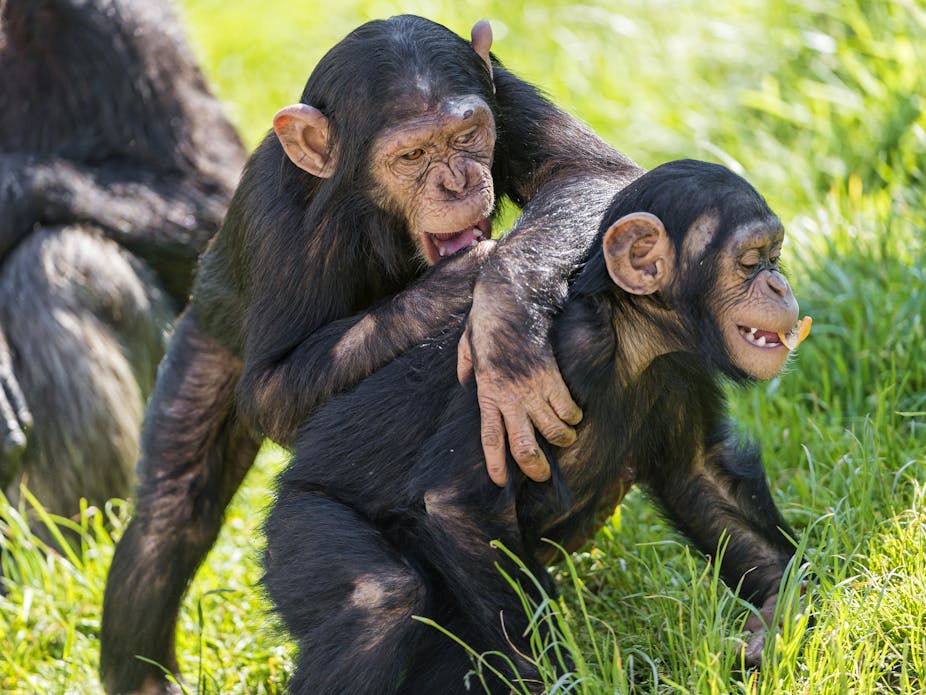Picking your child’s first school can be one of the hardest choices you make as a parent. Debate rages over whether it’s better for children to start academic-style learning techniques at a young age or be allowed to learn through their own play. Much of this centres on how important play is to our development.
We recently carried out a study that showed the amount of play among primates is related to the size of an important part of the brain. This boosts the evidence that play’s natural function may be to facilitate learning and development. And it gives a hint as to why animals may have evolved to play in the first place.
In our study, we compared the amount that different primate species (including humans, chimpanzees and gorillas) play to the size of a part of the brain known as the cortico-cerebellar system. This system plays an important role in learning. Specifically, it helps to build and use the mental models that the brain maintains about the world. We looked at both the average amount of daily time primate species spent in any sort of play, and at different species grouped according to how much social play there was among adults.
The results, published in the journal Primates, showed there was generally a close relationship between the amount that animals played and the size of their cortico-cerebellar systems. Those species that exhibited the most play also had the largest cortico-cerebellar systems.

Our study is part of a broader endeavour by biologists to try to understand what the biological function of play might be. It is very likely that play does have a function beyond simply being fun, given how much time and energy is dedicated to it by humans and so many other species, from orangutans to octopuses. It is highly unlikely that so many animals would have evolved to spend so much time and energy on a behaviour that didn’t benefit them in some way.
Studies looking at squirrels, wild horses and brown bears have confirmed that the amount of time that animals spend playing when they’re young does seem to have an important effect on their long-term survival and reproductive success. But exactly how play achieves this effect isn’t obvious.
Numerous suggestions for what the function of play might be have been put forward by biologists over the years. These have included the idea that play is a form of exercise for animals and so improves their health and fitness. And the notion that the positive feelings experienced during play may help to counteract the damaging effects of stress. Another idea, which our study sought to test, is that play may help an animal’s learning and mental development, increasing their chances of successfully navigating the challenges of life.
The theory is that, by playing, animals might effectively be conducting informal experiments, manipulating objects and trying out behaviours. They then observe the consequences in order to build an understanding of cause-and-effect relationships. This could eventually develop into an understanding of how to successfully achieve important life tasks such as using tools or managing relationships.

One way of testing this idea is to see whether there is a relationship between play and the organ that underlies learning (the brain) across species. Previous studies have suggested that there is, at least in primates. A 2014 study found a positive relationship between the amount of time that some primate species spend playing and the amount of post-natal brain growth that they experience. Another series of studies found relationships between play and the size of other brain structures including the neocortex, cerebellum, amygdala, hypothalamus and striatum.
Our study, which found a relationship across primate species between play and a part of the brain known to be intimately involved in learning, builds on this work and adds support to the idea that play may function as a learning mechanism. Limitations in the methods and data that were available for us to use mean that our results are preliminary, but they are still enough to make us reconsider the potential importance of play in our lives and in the lives of our children.

